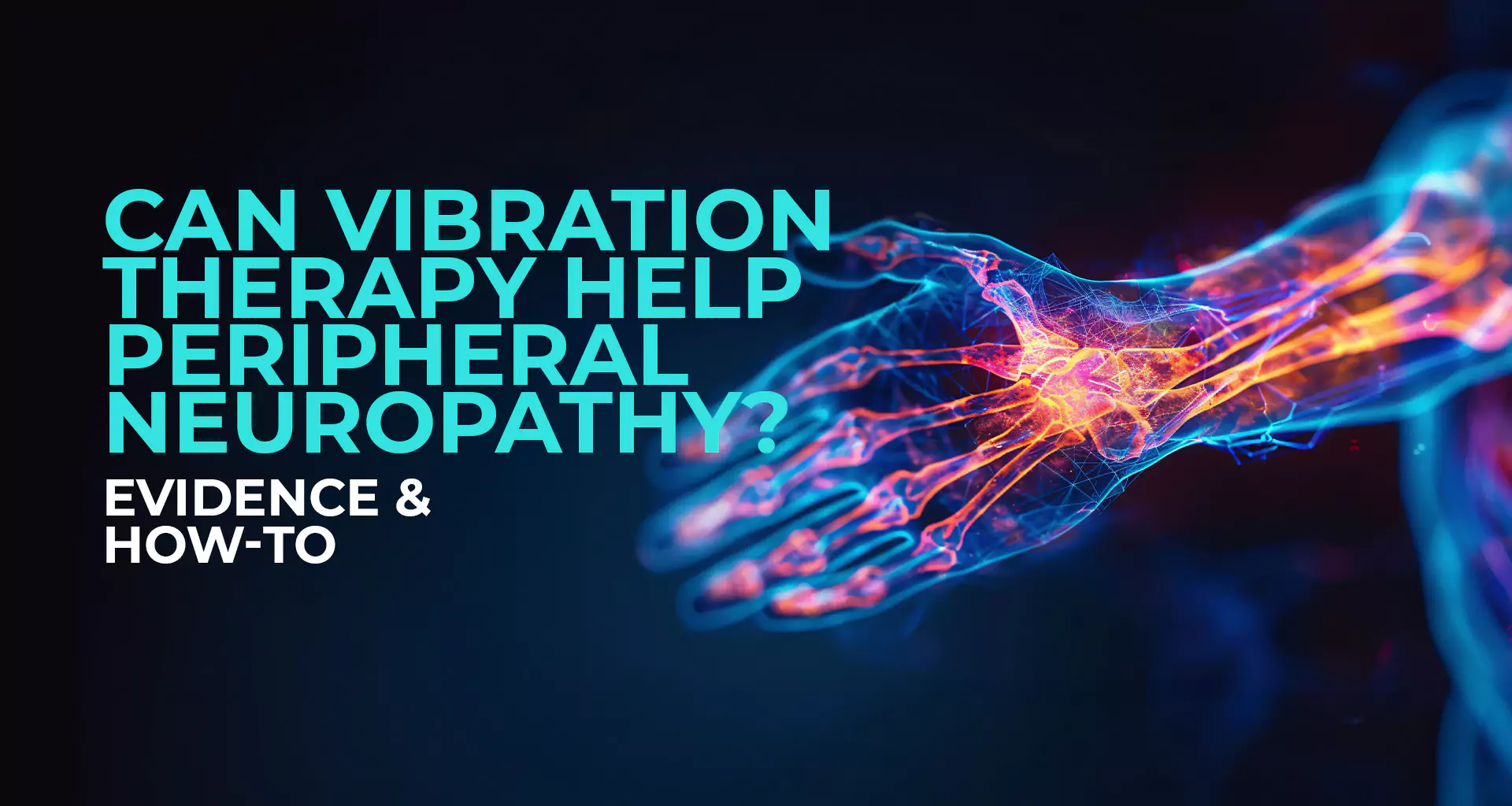
Yes, it can.
As seen from clinical trials, Whole Body Vibration (WBV) for less than 15 minutes, 2 to 3x weekly, lowered neuropathic pain scores by 50%.
Subjects improved other measures, including nerve-conduction velocity, after 4–12 weeks.
Peripheral neuropathy (PN) is a condition that develops when nerves outside of the brain and spinal cord (peripheral nerves) are damaged.
This often causes pain, numbness, and other challenging symptoms in the hands, feet, or extremities.
While there are several causes of peripheral neuropathy, the main one is diabetes, with over half the people diagnosed with it eventually developing PN.
PN can also arise after chemotherapy, injuries, vitamin deficiencies, toxin exposure, infections, or from genetic conditions.
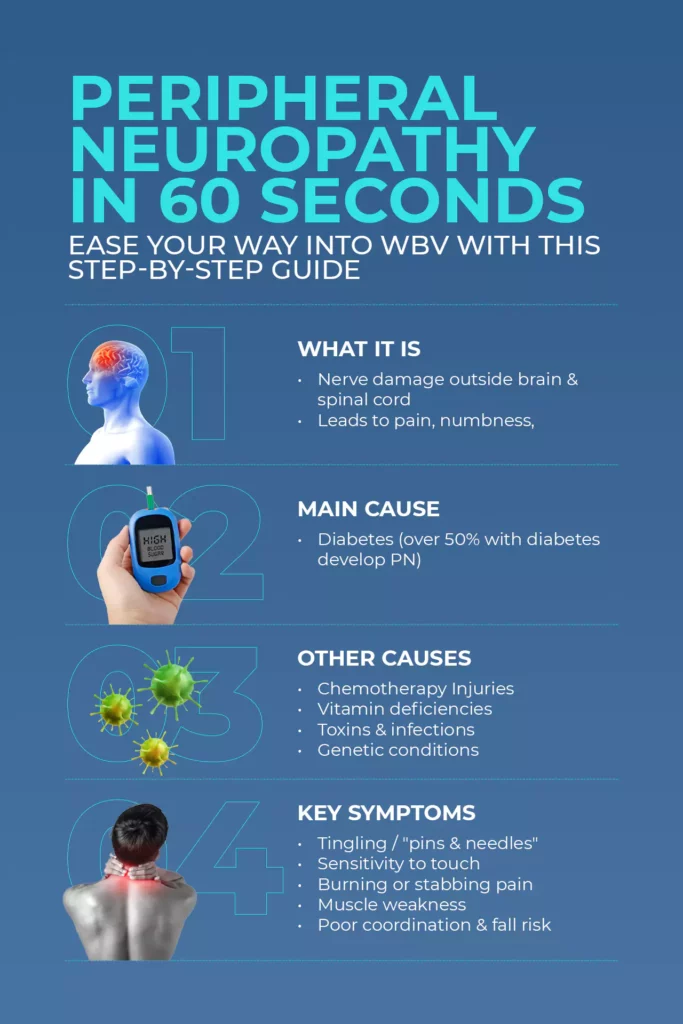
Infographic summarizing what Peripheral Neuropathy is, its primary plus other causes, and symptoms
The main symptoms of Peripheral Neuropathy include:
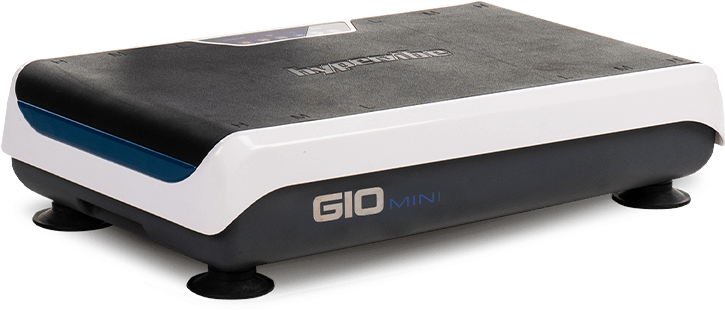




WBV does not repair or grow damaged nerves.
However, it can help the ones that are impaired to work better.
Early research, mainly involving diabetic peripheral neuropathy, is showing that vibration therapy eases pain, enhances balance, and improves nerve function.
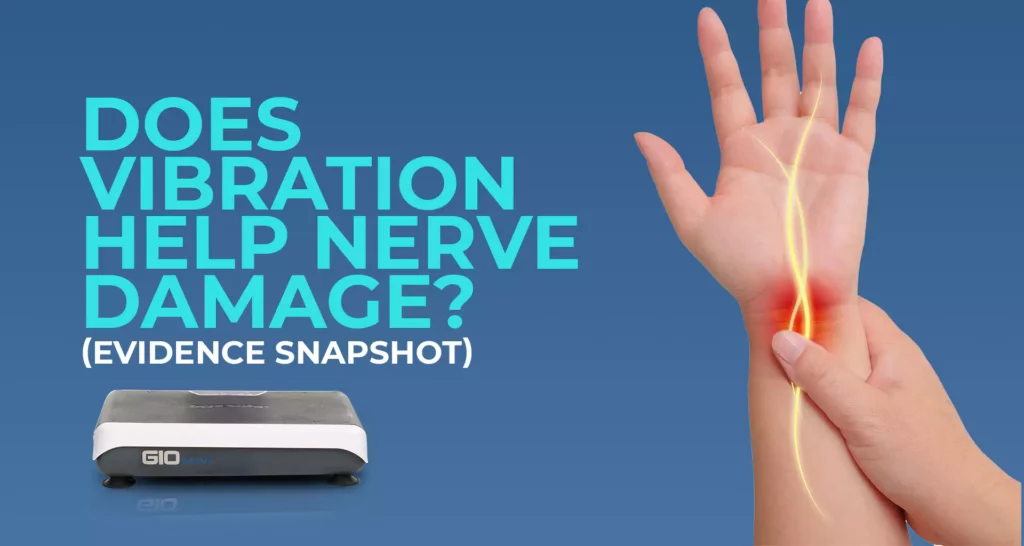
Image of a hand with affected nerves with the headline Does Vibration Help Nerve Damage (Evidence Snapshot)
Here’s a snapshot:
|
Study |
Participants (N; gender if available; age) |
Vibration Protocol |
Outcome (effect) |
|
N = 20 total (12 WBV, 8 sham); 9 M, 11 F; mean age 58.5 ± 10.7 years |
WBV: 3×/week, 12 min/session (4 × 3-min, separated by rest), over 4 weeks; sham for controls |
Pain decreased significantly in WBV vs sham (VAS) at 2 & 4 weeks and persisted 1–5 weeks post-treatment |
|
|
Total N = 83 across 3 WBV studies (mixed DM1 & DM2, ages ~57–76; gender not individually reported) |
Intermittent WBV (less than 15 minutes total), 15–30 Hz, amplitude 1–5 mm; follow-up after 4–6 weeks |
Pain decreased, Balance increased, slight glycemic control improvements were made—evidence rated very low to low quality overall |
|
|
N = 26 (13 WBV, 13 control); 16 M, 10 F; WBV age 60.7 ± 5.1, control 59.5 ± 4.3 years |
WBV 3x weekly for six weeks, plus regular care; the control group only got regular care. |
Pain decreased, Neuropathy scores decreased, Vibration perception increased, Balance & QoL increased |
Here’s a simple protocol to get you started:
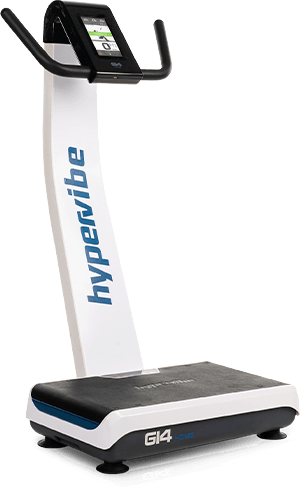




When shopping for the best vibration plate for neuropathy, you should focus on:
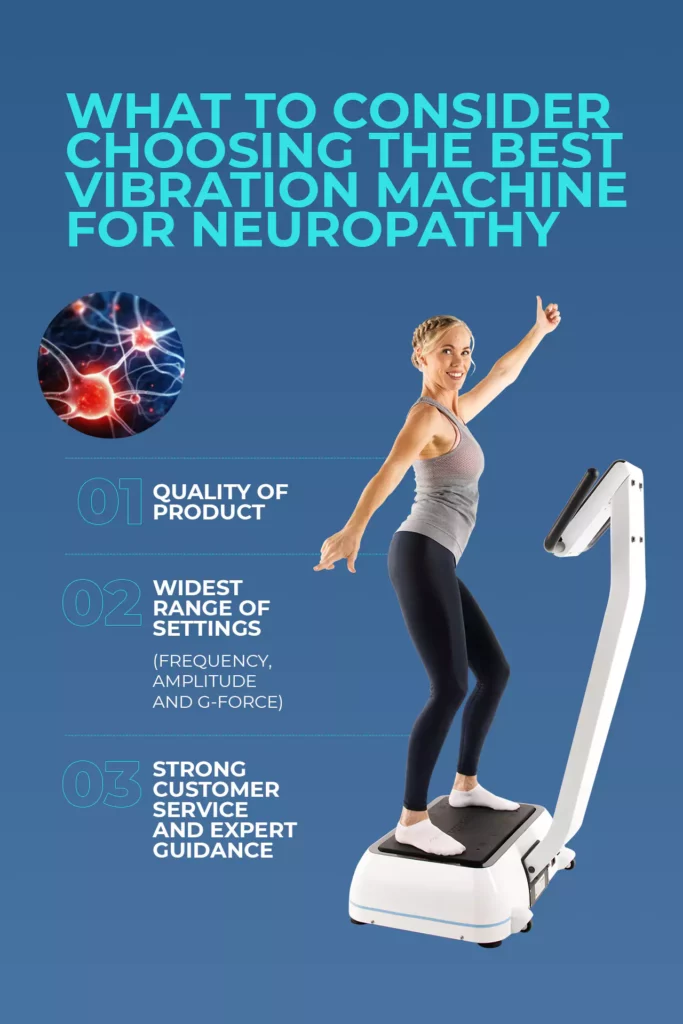
What to consider when choosing a vibration machine for neuropathy
Go for devices that let you run steady 10–30 Hz programs since they give the nervous system a predictable stimulus that clinical studies link to reduced pain and better balance, especially in peripheral neuropathy.
Here’s a detailed breakdown:
|
Must-Have Feature |
Why It Matters |
|
Adjustable frequency 5–35 Hz |
Neuropathy benefits often appear with low-to-mid frequencies (predictable stimulus for nerves). |
|
Measured G-force or live feedback |
Shows actual intensity so you can use therapeutic, not excessive, loading. |
|
Stable, pivotal (oscillating) platform |
Oscillating motion mimics gait and transfers less jolt to the spine, which is better for balance work. |
|
Trusted warranty & clinical support |
Neuropathy users often need guidance and service. Robust support is non-negotiable. |
Power Plate Move is a research-backed, performance-focused platform with preset frequencies and manufacturer certifications geared toward homes, clinics, and professionals.
It’s compact and offers a wide range of settings but is heavy and limited as a vertical platform.
Hypervibe, on the other hand, is a research-backed pivotal platform, offering a quality, home-market plate with wide frequency and amplitude settings and an optional tower for stability.
Both are solid options.
Hypervibe has an edge as a pivotal platform that is compact but robust with a range of settings that will allow you to slowly progress in your routine.
Yes, Vibration Therapy for neuropathy is a game-changer, but being aware of safety guidelines and contraindications is necessary:
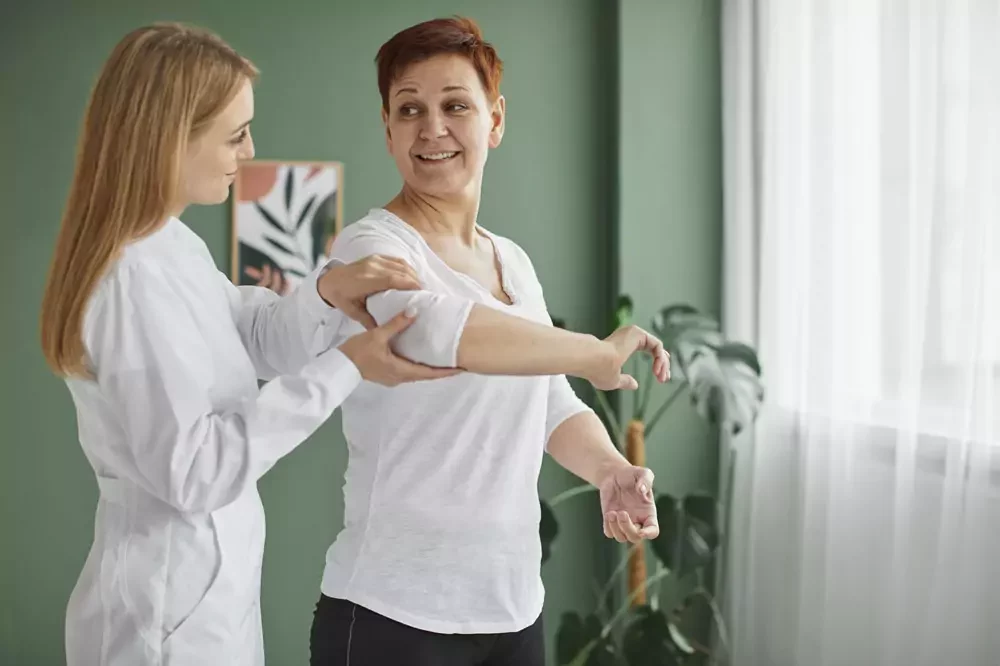
A therapist assisting a patient with a hand stretch
If any of these occur, consult your healthcare provider so they can assess your situation and help you decide if vibration training is still the best fit for you.
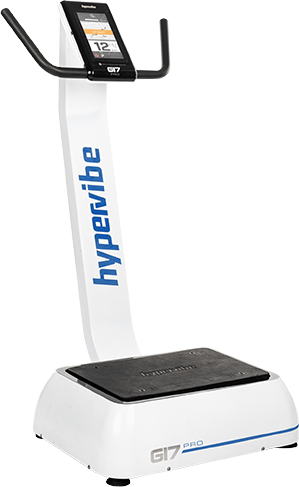




Yes,
WBV is good for neuropathy.
Is enhanced circulation a benefit of WBV?
Of course… But is it the only one?
No, it isn’t because WBV also stimulates the sensory nerves, improves sensation, reduces pain, and enhances strength and balance.
Consistency is the key to results.
Clinical studies explain that you may start experiencing some pain relief in as little as 4–6 weeks.
However, for the bigger gains, anywhere between 8-12 weeks is where you can spot significant differences in balance and stability.
WBV can’t actually regrow damaged nerves.
However, it can help the ones that are not damaged to work better.
By gently waking up nerve endings and improving blood flow, Vibration Training supports muscle response, eases discomfort, and can make a real difference in how you feel and move each day.
Yes, it can.
Vibration Therapy can have a calming effect on the nervous system.
Studies on HRV prove that WBV helps shift the body into a more relaxed state, a bonus for chronic pain management.
The evidence shows that when used correctly, whole-body vibration isn’t just a “maybe” tool but can help you manage peripheral neuropathy.
It’s a safe way to reduce pain, improve balance, and give your nervous system a much-needed boost.
However, for you to see results, you must be consistent and mindful. Follow the protocol.
Keep your sessions gentle, track your pain scores and walking speed each week, and make adjustments as needed.
With that said, if you’ve been struggling with burning, tingling, or instability, consider making Hypervibe WBV part of your wellness plan, alongside the guidance of your healthcare provider.
It’s time to reclaim the movement you thought you’d lost and step into each day with more confidence.
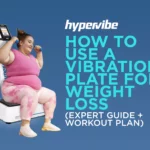
Here’s how we use a vibration plate for weight loss...
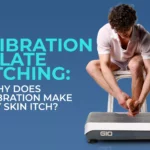
Many people, especially beginners, notice an itchy or tingling “pins-and-needles”...

Taking into consideration the growing popularity of the vibration plate,...

The lymphatic system, also called the lymphoid system, is an...

Most probably you are already familiar with the body vibration...